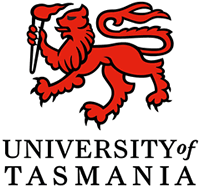About the Project
The Southern Ocean influences climate, sea level, biogeochemical cycles and marine productivity on global scales. Observations suggest that rapid change is already underway in the Southern Ocean, but the measurements are sparse and hence the nature, causes and implications of Southern Ocean change are not yet understood. This exciting PhD project will contribute to a multi-disciplinary observational program measuring a comprehensive suite of physical and biogeochemical variables along a full‐depth repeat hydrographic section extending from Australia to the Antarctic sea ice edge.
The candidate will join a research team on a 42 day oceanographic voyage of the Marine National Facility’s Research Vessel ‘Investigator’ in the Southern Ocean in early 2018, that will study the marine biogeochemistry of trace elements and their isotopes (TEIs) along the SR3 section (~140oE), a signature field program of the ACE CRC. Following the fieldwork, the candidate will participate in laboratory analyses and experiments using state-of-the-art facilities and instrumentation to determine the distributions, physico-chemical form and sufficiency of micronutrient trace elements in the Southern Ocean, and their relationships to changing environmental conditions. In the latter stages, this project will feed vital information on the prevalence and flux of trace elements into biogeochemical and ecosystem models of the region.
References
Bowie, A. R., Lannuzel D., Remenyi T.A., Wagener T., Lam P.J., Boyd P.W., Guieu C., Townsend A.T., Trull T.W. (2009). Biogeochemical iron budgets of the Southern Ocean south of Australia: Decoupling of iron and nutrient cycles in the subantarctic zone by the summertime supply. Global Biogeochemical Cycles 23, GB4034, doi:10.1029/2009GB003500
Bowie A.R., Townsend A.T., Lannuzel D., Remenyi T., van der Merwe P. (2010). Modern sampling and analytical methods for the determination of trace elements in marine particulate material using magnetic sector ICP-MS. Analytica Chimica Acta, 676, 15-27
Boyd, P.W. et al. (2000). A mesoscale phytoplankton bloom in the polar Southern Ocean stimulated by iron fertilisation of waters, Nature 407, 695-702
Boyd, P. and Ellwood, M. (2010). The biogeochemical cycle of iron in the ocean, Nature Geoscience, vol. 3, no. 10, pp. 675-682, doi:10.1038/ngeo964
GEOTRACES Science Plan (2006). Available at: http://www.geotraces.org/science/science-plan
Jickells T.D., An Z.S., Andersen K.K., Baker A.R., Bergametti G., Brooks N. et al. (2005). Global iron connections between desert dust, ocean biogeochemistry, and climate. Science 308, 67-71
Mawji, E., et al. (2015). The GEOTRACES Intermediate Data Product 2014, Mar. Chem. (2015), http://dx.doi.org/10.1016/j.marchem.2015.04.005
Rhein, M. et al. (2013). Observations: Ocean. In: Climate Change 2013: The Physical Science Basis. Contribution of Working Group I to the Fifth Assessment Report of the Intergovernmental Panel on Climate Change. Cambridge University Press, Cambridge, United Kingdom and New York, NY, USA, 255‐315. doi:10.1017/CBO9781107415324.010
Sedwick P.N., Bowie A.R., Trull T.W. (2008). Dissolved iron in the upper ocean along the CLIVAR SR3 section (Australian sector of the Southern Ocean): Meridional and seasonal trends. Deep-Sea Research I 55(8), 911-925
Sokolov, S. and S. R. Rintoul, 2009. The circumpolar structure and distribution of the Antarctic Circumpolar Current fronts. Part 1: Mean circumpolar paths. Journal of Geophysical Research – Oceans, 114, C11, doi:10.1029/2008JC005108
Sokolov, S. and S. R. Rintoul, 2009. The circumpolar structure and distribution of the Antarctic Circumpolar Current fronts. Part 2: Variability and relationship to sea surface height. Journal of Geophysical Research – Oceans, 114, C11, doi:10.1029/2008JC005248
Tagliabue, A., Mtshali, T., Aumont, O., Bowie, A. R., Klunder, M. B., Roychoudhury, A. N., and Swart, S. (2012). A global compilation of dissolved iron measurements: focus on distributions and processes in the Southern Ocean, Biogeosciences, 9, 2333‐2349, doi:10.5194/bg‐9‐2333‐2012
Tagliabue A., Bowie A.R., Boyd P.W., Buck K.N., Johnson K.S., Saito M.A. (2017). The integral role of iron in ocean biogeochemistry. Nature 543, 51–59, doi:10.1038/nature21058

 Continue with Facebook
Continue with Facebook

